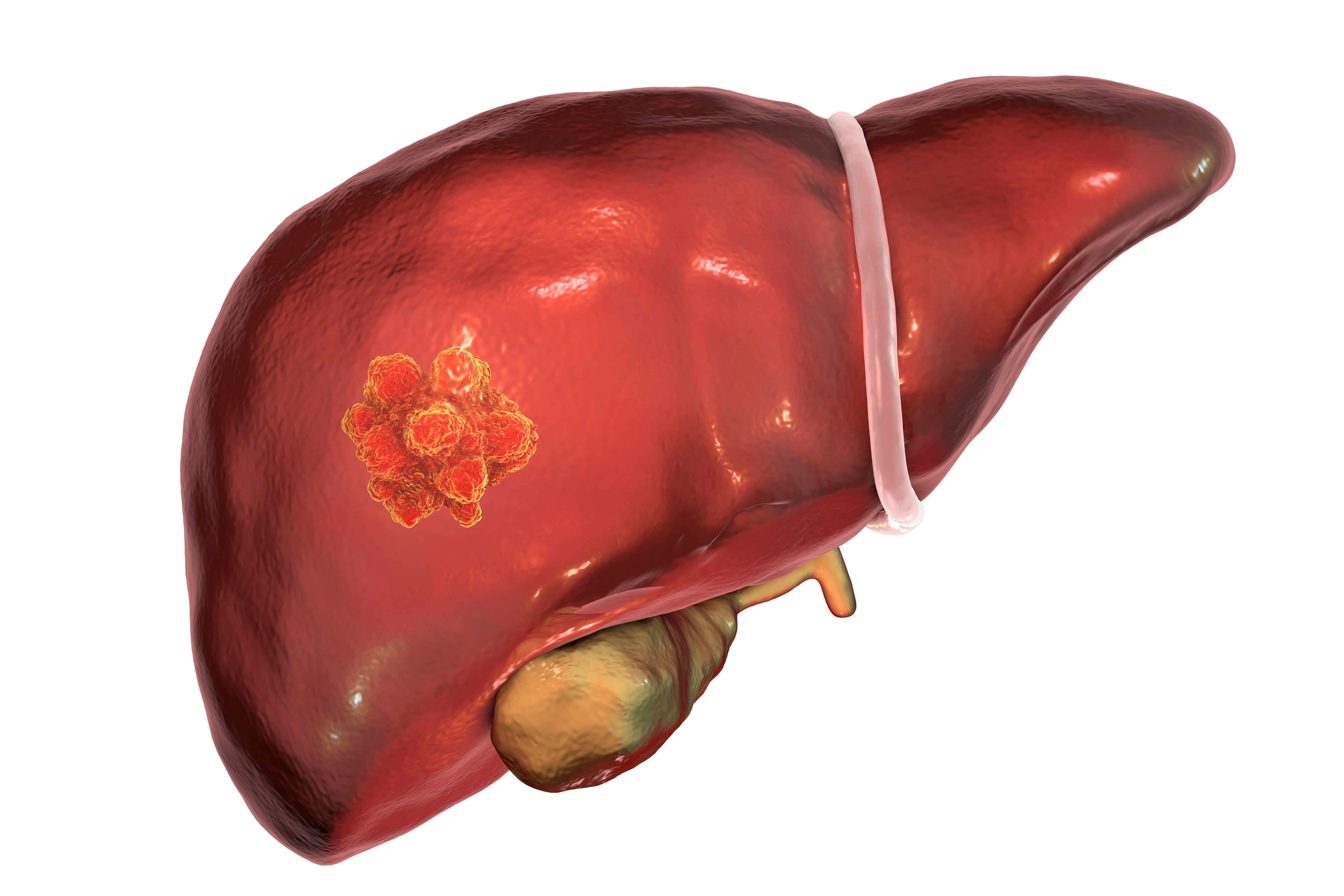SERS Used to Detect Early-Stage Liver Cancer
In a new study published in Spectrochimica Acta Part A: Molecular and Biomolecular Spectroscopy, scientists from Kunming, China tested a new means of detecting early-stage liver cancer using surface-enhance Raman spectroscopy (SERS) (1).
Liver cancer. 3D illustration showing presence of tumor inside liver | Image Credit: © Dr_Microbe - stock.adobe.com

Liver cancer is the sixth most common cancer and ranks third in global cancer deaths. Early liver cancer lacks obvious symptoms, and many times once a patient is diagnosed, the cancer has already progressed to middle or late stages. This has made it a priority for scientists to seek better methods for detecting the disease at earlier stages.
The two most common means of screening for liver cancer are imaging tests (ultrasound imaging, magnetic resonance imaging, computed tomography) and serological marker detection. However, these methods have certain limitations. For example, alpha-fetoprotein (AFP) is often used as a serum marker for detecting liver cancer; however, it cannot be easily distinguished in early cancer patients. Another approach, puncture biopsy, can provide a clear pathological diagnosis, though at the cost of causing patients pain.
In recent years, surface-enhance Raman spectroscopy (SERS) has become a popular approach for screening and diagnosing diseases. Notably, it is currently used to determine bioactive molecules, such as DNA, proteins, and antibodies. It offers very low detection limits and ultrahigh sensitivities at the cost of extensive preparation and selection for substrates. The comparability of SERS bases and biological samples is what most affects the technology regarding disease diagnosis. Silver (Ag) and gold (Au) are typically used as enhancement substrates; however, Ag was the preferred option for this experiment, as Ag has better absorption and conversion efficiencies that Au, while also having a better coupling effect with electromagnetic fields. But Ag is not biocompatible, meaning it can have a toxic effect on serums used in the process. This experiment was therefore conducted using Ag@SiO2 nanoparticles as SERS substrates.
As part of the experiment, serum samples were obtained from two groups: patients with liver cancer and healthy individuals. Experiments were repeated several times, with the best SERS spectrum being obtained when the volume ratio of serum to deionized water was 1:2. From there, data preprocessing was performed on this SERS spectrum, with the data then being combined with principal component analysis (PCA), partial least-squares discriminant analysis (PLS-DA), and orthogonal partial least squares discriminant analysis (OPLS-DA) for further classification analysis. The spectral data was most effective with samples upon being combined with OPLS-DA, with a classification accuracy of 97.98%, sensitivity of 97.14%, and specificity of 98.44%. These findings highlight SERS as a potential avenue for detecting early-stage liver cancer in the future.
Reference
(1) Ou, Q.; Jinag, L.; Dou, Y.; Yang, W.; Han, M.; Ni, Q.; Tang, J.; Qian, K.; Liu, G. Application of surface-enhanced Raman spectroscopy to human serum for diagnosing liver cancer. Spectrochim. Acta A Mol. Biomol. Spectrosc. 2024, 308, 123702. DOI: https://doi.org/10.1016/j.saa.2023.123702
Pittcon 2025: Keynote Coulter Lecture Highlights Work in Regenerative Engineering
March 3rd 2025Yesterday, at 5:00 pm in Ballroom East, the Wallace H. Coulter Lecture took place, and it was delivered by Cato T. Laurencin, MD, PhD, who is well-known as a scientist and entrepreneur with an extensive career in regenerative engineering. His lecture highlighted the work he and his team has done in this space.
New AI-Powered Raman Spectroscopy Method Enables Rapid Drug Detection in Blood
February 10th 2025Scientists from China and Finland have developed an advanced method for detecting cardiovascular drugs in blood using surface-enhanced Raman spectroscopy (SERS) and artificial intelligence (AI). This innovative approach, which employs "molecular hooks" to selectively capture drug molecules, enables rapid and precise analysis, offering a potential advance for real-time clinical diagnostics.
Advancing Zebrafish Research: FT-IR Imaging Sheds Light on Tissue Preservation in Zebrafish
February 5th 2025Researchers at the University of Lublin and the Medical University of Lublin have demonstrated the first application of FT-IR imaging in zebrafish larvae, revealing that frozen samples better preserve tissue structure than chemical fixation.